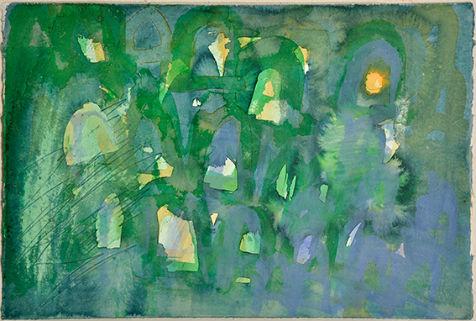For the past four years I have been responsible for running an organisation that specifically exists to support artists with intellectual disabilities, promoting their work and advocating for their inclusion within contemporary art practice. Arts Project Australia was established 38 years ago with the aim that the artwork of people with intellectual disabilities should be accepted on its merits as visual art, not “disabled art”. It should be exhibited in a professional manner, not tacked up on a supermarket wall. It should stand proudly beside work by “non-disabled” artists. Oh – and it should be good!
I must say, my predecessors have done a wonderful job of achieving our mission. We have come a long way since the 1970s when the names of artists were often not given in early Arts Project exhibitions (for fear of embarrassing their families). Today we have 120 artists working in our studio program each week, a talented and committed staff (95% of whom are practising artists themselves), an annual exhibition program to rival any public gallery, $115k in artwork sales last financial year (of which 60% was paid to the artists), and a huge amount of collaboration and partnership with external artists, galleries and the broader contemporary art sector.
A number of our artists have been working in our studio for over 20 years, and have established careers. We manage those careers, as any commercial gallery would do. An equal number of artists have no aspirations to being a professional artist, but come because they enjoy the process of making art. Having visited a number of similar organisations overseas, I can safely say we are one of the world’s best in this field.
The majority of Arts Projects artists have a little trouble advocating for themselves. Depending on the nature of their disability, they may be unable to verbalise concepts. They may have limited literacy skills; they may have difficulty sharing space with others; they may be legally blind or hearing impaired; they may have some physical restrictions. But when they are at Arts Project, they are artists like any others. They pursue their own artistic practice and vision, whatever that may be, and we are simply there to assist this. And it’s important that their work be accepted on its merits as visual art, not because they have a disability.
We are often referred to as a “supported studio”, which is true – we offer support to our artists that they need to enable the creation of artwork. Whether that is assistance with mixing colours, setting up a work station that works for their disability, advising on mediums, or just talking about the artwork. Our artists don’t intellectualise their work, or place it within fashionable theoretical frameworks. They create because they want to, and the best work has a powerful energy that eludes all attempts to categorise it. We also offer support through our gallery, in terms of promotion, publicity, exhibition, and sales. All these are things most Arts Project artists could not manage on their own, or could not afford. And providing them means additional costs not always seen or understood by funding agencies.
Yet this model doesn’t sit well with arts funding agencies. We hover between institutionalised definitions of “community cultural development” (that great overarching definition for most disability arts activity), “public gallery” (we are open to the public, but we also sell work) and “artist studio”. One Australia Council staff member recently informed me that we should not refer to our artists as “artists” in a Community Partnerships funding submission – only the people who worked with them deserved this distinction.
To their credit, Arts Victoria suggested that we include an explanation of our model in their funding submissions, so that peer assessors could better understand its unique structure. And this has helped us successfully receive programming and partnerships funding over the past two years.
We’re fortunate we decided to place our faith in disability funding and not arts funding all those years ago. Because most arts funding is project based, it couldn’t provide the financial support that our organisation required to provide ongoing artistic support and development for our artists. Don’t get me wrong – project funding is great, but if you want to provide real pathways to a meaningful artistic career for people with intellectual disabilities, you need to assure your future sustainability. And I have to credit the disability funding agencies, state and federal, who have consistently contributed to the development of Arts Project Australia over the past 38 years, despite the fact that we haven’t really fitted their definitions of a day program or supported employment service.
Disability agencies recognise the value of our work with artists with intellectual disabilities and understand the additional costs required in delivering the right supports to enable their career development. But these people are artists and they should be recognised by the arts community too.





